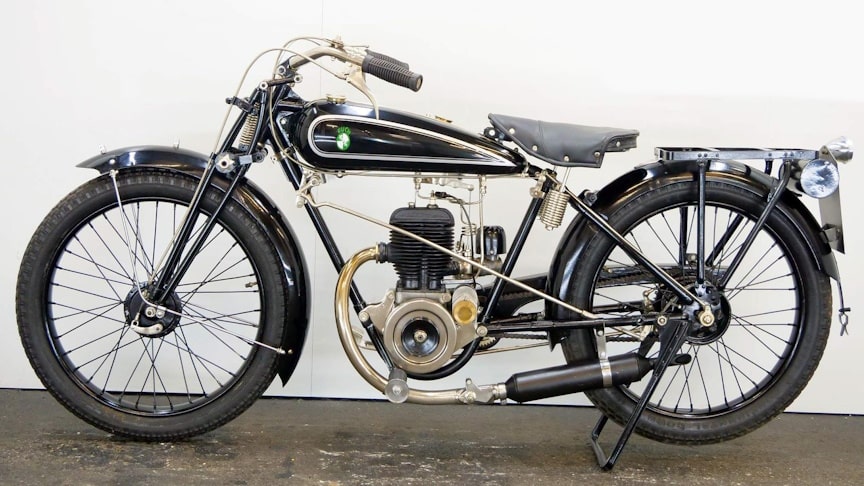This fascinating pre-war split single bike is in good shape and should not be missing in any Puch collection. From 1889 Johann Puch (1862–1914) worked as an agent for Humber vehicles and manufacturer of Styria safety bicycles in a small workshop in Graz and in 1890 he founded his first company, Johann Puch & Comp., employing 34 workers. Cyclists like Josef Fischer, winning the first edition of Paris–Roubaix in 1896, popularized Styria bicycles which were even exported to England and France. By 1895, Puch already employed more than 300 workers producing about 6000 bikes a year. In 1897 Puch left the company after a dispute with his business partners.
source.image: classic-motorcycle.com
Two years later he founded the First Styrian Bicycle Factory AG in Graz. Puch’s company became successful through innovation and quality handicraft, rapidly expanding over time. It soon began producing motorcycles and mopeds. The main production plant, later called Einser-Werk, was constructed in the south of Graz, in the district of Puntigam. Production of engines was started in 1901 and cars followed in 1904. In 1906 the production of the two-cylinder Puch Voiturette began and in 1909 a Puch car broke the world high-speed record with 130.4 km/h.
In 1910, Puch is known to have produced sedans for members of the Habsburg imperial family. In 1912 Johann Puch went into retirement and became the company’s honorary president. In that year the company employed about 1,100 workers and produced 16,000 bicycles and over 300 motorcycles and cars annually. Puch automobiles were successful at the pre-war Österreichische Alpenfahrt rally and from 1913, the four-cylinder 38 PS (horsepower) Type VIII Alpenwagen was manufactured in Graz. During World War I, Puch became an important vehicle supplier to the Austro-Hungarian Army.
Advertisement
The Puch green and white chequered badge is in the colours of the Steyr town flag and is very similar in concept to the BMW badge, which is in the colours of the Bavarian flag. With the collapse of the Austro-Hungarian empire following the War, the market for automobiles shrank and production was discontinued. However, again in 1919, the new Type XII Alpenwagen was developed. In 1923 the Italian engineer and FIAT agent Giovanni Marcellino is said to have been sent by the banks to wind up the Puch factory in Graz.











